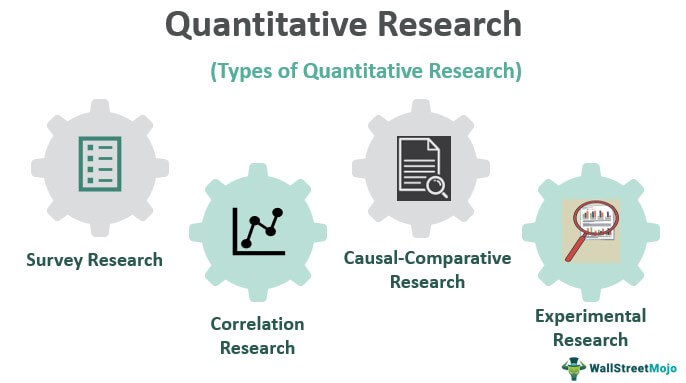Quant researchers, often referred to as “quant researchers,” are professionals who use quantitative analysis to assist in making decisions. So, what’s a quant researcher? They are commonly employed in the finance and investment sector, particularly in hedge funds, investment banks, and private equity firms. However, they can also work in other sectors like technology, healthcare, and academia.
Quant researchers design and implement complex models that allow financial firms to price and trade securities. They also create models to predict movements in the stock market, interest rates, and other economic indicators. These professionals often have strong skills in mathematics, statistics, economics, computer science, and machine learning.
1. What’s does a Quant Researcher do?

A quantitative researcher, or “quant,” in the context of a hedge fund, is a professional who applies mathematical and statistical methods to financial and risk management problems. They create and implement complex models that allow the hedge fund to price and trade securities and manage risk. These individuals usually possess strong skills in mathematics, statistics, and programming.
Here is an example of a day in the life of a quantitative researcher at a hedge fund:
Morning:
- Review overnight market activity: Start the day by checking overnight developments in global markets. Review how the hedge fund’s trading strategies performed overnight. This could involve checking automated trading systems and looking at any notable market movements that might require adjusting models or strategies.
- Data Analysis: Review and analyze new data sets that have been integrated into the system overnight. This could involve running data quality checks, analyzing the statistics of the data, and exploring potential impacts of the new data on existing trading models.
Mid-Day:
- Model Development/Improvement: Spend the bulk of the day developing new models or improving existing ones based on recent data. This could involve running simulations, backtesting strategies, and iterating on models to optimize performance.
- Collaboration: Meet with other quants, data scientists, traders, and software developers to discuss ongoing projects. For instance, you might be in a meeting to brainstorm new trading strategies, discuss potential improvements to current models, or troubleshoot any issues that have arisen.
Afternoon:
- Implementation: Work with software engineers to implement changes to trading algorithms based on the insights from your models.
- Report and Communicate: Write detailed reports of your findings from your research and analysis. Prepare to present them to stakeholders, which could include other researchers, portfolio managers, and possibly clients.
Evening:
- Market Preparation: Towards the end of the day, start preparing for the next trading day or week. This could involve tweaking trading algorithms, adjusting risk management protocols, or making predictions based on the day’s data analysis and market movements.
Remember, quant researchers also need to continuously stay updated on market trends, new quantitative techniques, and advancements in relevant technology, so a part of their day might involve reading academic papers or taking online courses. This field requires a strong passion for numbers, continuous learning, and a keen interest in financial markets.
2. How to become a Quant Researcher?
Here’s a summarization of the process and options to become a quant researcher in table form:
| Step | Description |
|---|---|
| 1. Obtain a Bachelor’s Degree | Begin by getting a bachelor’s degree in a related field such as Mathematics, Physics, Computer Science, Finance, or Economics. |
| 2. Gain Initial Experience | Participate in internships or entry-level positions in finance, data analysis, or related fields to gain practical experience and understand the industry better. |
| 3. Pursue a Master’s Degree (optional) | Some quants have a Master’s degree in a related field. Popular choices are Financial Engineering, Computer Science, Statistics, or Mathematics. These programs often provide deeper knowledge of the complex mathematical and statistical models used in quantitative finance. |
| 4. Earn a PhD (optional) | Many quants also hold a PhD, particularly those in more research-oriented roles. Relevant fields for a PhD include the same ones listed for a Master’s degree. While a PhD isn’t mandatory, it can provide a more thorough understanding of complex models and methods used in quantitative finance. |
| 5. Learn Programming Languages | Python, R, C++, MATLAB, and SQL are commonly used in quantitative finance. You should be proficient in at least one or two of these. |
| 6. Obtain Financial Certifications (optional) | Certifications like the Chartered Financial Analyst (CFA) or Financial Risk Manager (FRM) can be beneficial in gaining specialized knowledge and demonstrating commitment to the field. |
| 7. Gain Experience in the Finance Industry | Before becoming a quant researcher, gaining experience in the finance industry, especially in roles related to data analysis, can be beneficial. This could be at a bank, a hedge fund, an asset management firm, or a related institution. |
| 8. Continuous Learning | The finance industry, particularly quantitative finance, is always evolving. Stay updated on new trends, techniques, and technologies through ongoing learning. This could involve reading academic papers, attending industry conferences, or taking online courses. |
Now, let’s list some specific diploma programs relevant for a quantitative researcher along with the university or institution that offers them. Please note that the reputation and ranking of universities can vary and change over time, and one should research thoroughly before making a decision.
| Degree/Diploma | University | Description |
|---|---|---|
| Bachelor’s in Mathematics | Massachusetts Institute of Technology (MIT) | A rigorous program that provides a strong foundation in quantitative reasoning. |
| Bachelor’s in Computer Science | Stanford University | This program equips students with strong programming and algorithmic skills. |
| Bachelor’s in Economics | University of Chicago | Offers deep insights into economic theories, which can provide valuable context for a career in quantitative finance. |
| Master’s in Financial Engineering | University of California, Berkeley | A specialized program designed to prepare students for careers in quantitative finance, covering subjects like derivative pricing, risk management, and computational methods. |
| Master’s in Statistics | Harvard University | Provides advanced statistical knowledge needed for developing and testing financial models. |
| Master’s in Data Science | University of California, San Diego | A blend of statistical knowledge and programming skills, with coursework in machine learning. |
| PhD in Quantitative Finance | Princeton University | This program is for those who want to pursue research roles in finance and focuses on the use of quantitative methods in finance. |
| PhD in Mathematics | University of Cambridge | A program that can provide a deep understanding of complex mathematical models. |
Please note that these are just examples. There are many other excellent universities and programs worldwide that can prepare students for a career as a quant researcher. And a program’s suitability depends not just on its content, but also on factors like the student’s career goals, financial resources, and personal circumstances.
3. An Example of Quant Researcher Snippet
Sure, let’s take an example from a quant researcher’s work, involving the development of a predictive model for stock prices using a machine learning technique known as linear regression. This is a simplified example and real-world quant research often involves far more complex models and larger datasets.
Snippet:
import pandas as pd
from sklearn.model_selection import train_test_split
from sklearn.linear_model import LinearRegression
from sklearn import metrics
# Load the historical stock price data
data = pd.read_csv('stock_prices.csv')
# Define the predictor variable (X) and the target variable (y)
X = data[['High', 'Low', 'Open', 'Volume']].values
y = data['Close'].values
# Split the data into training set and test set
X_train, X_test, y_train, y_test = train_test_split(X, y, test_size=0.2, random_state=0)
# Train the linear regression model
model = LinearRegression()
model.fit(X_train, y_train)
# Use the model to make predictions on the test set
y_pred = model.predict(X_test)
# Evaluate the model
print('Mean Absolute Error:', metrics.mean_absolute_error(y_test, y_pred))Explanation:
This script is written in Python and uses the pandas and scikit-learn libraries, which are commonly used in data analysis and machine learning.
- The script starts by loading a CSV file of historical stock price data. This data includes features like the highest price, lowest price, opening price, and trading volume for each day.
- The ‘High’, ‘Low’, ‘Open’, and ‘Volume’ columns are used as predictor variables (X), and the ‘Close’ column (the closing price for each day) is used as the target variable (y).
- The data is split into a training set (80% of the data) and a test set (20% of the data). The model will be trained on the training set and then tested on the test set.
- A linear regression model is created and trained on the training data.
- The trained model is then used to predict the closing prices for the days in the test set.
- Finally, the script evaluates the model by calculating the Mean Absolute Error (MAE) between the predicted closing prices and the actual closing prices in the test set. The MAE is a measure of how close the predictions are to the actual values, with lower values indicating better performance.
This is a very basic example of what a quant researcher might do. In a real-world scenario, a quant researcher would likely use more sophisticated models, consider many more variables, and also account for factors like transaction costs and risk management.
4. Conclusion
In conclusion, a quantitative researcher, often termed a “quant,” plays a crucial role in many sectors, especially in finance and investments. By applying mathematical and statistical methods to financial and risk management problems, quants create and implement complex models that enable firms to make informed decisions, manage risk, and generate profits.
The path to becoming a quant researcher usually involves rigorous academic training in fields like mathematics, physics, computer science, or finance. Additionally, strong programming skills are essential, given the importance of data analysis and algorithmic development in the role. Experience in the finance industry is highly beneficial, and the field requires continuous learning due to its ever-evolving nature.
Day-to-day tasks of a quant researcher can vary widely but usually involve data analysis, model development and testing, strategy implementation, and communication with other team members and stakeholders. Despite the challenging nature of the work, it can be highly rewarding, offering the opportunity to solve complex problems and make a significant impact on a firm’s strategic decisions and performance.
The role of a quant researcher is a blend of research, programming, and financial expertise. Therefore, it suits individuals who have a passion for mathematics and coding, an interest in financial markets, and the ability to think critically and solve complex problems. It is a field that is expected to grow in the future, given the increasing reliance on data-driven decision-making in the finance industry.
